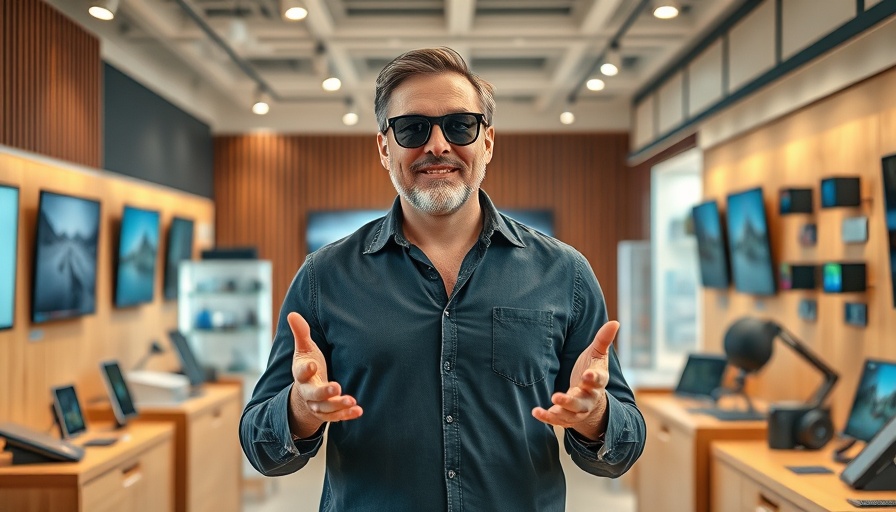
Google's Smart Glasses: A Strategic Revival
Google's recent announcement surrounding its AI-integrated smart glasses might seem another gadget rolling out from the tech giant. However, a closer inspection reveals an insightful strategy at play, particularly with alliances formed with renowned eyewear brands Warby Parker and Gentle Monster. This collaboration marks a crucial turning point in Google's approach to smart glasses, showcasing not only technological advancements but also a keen awareness of consumer sentiment towards wearable tech.
Fashion Meets Functionality
While AI abilities like generating directions or displaying reminders might stand at the forefront of technological conversation, how these gadgets look plays an equally vital role in their acceptance. Google aims to sidestep the infamous backlash from its earlier foray into smart glasses — those that turned heads but for the wrong reasons, largely due to privacy concerns. The collaboration with Warby Parker and Gentle Monster signals a deliberate pivot towards style. These brands have carved a niche among millennials and Gen Z, and this demographic connection is essential. Google recognizes that the visual appeal of smart glasses can significantly influence consumer acceptance and desirability.
The Evolution of Wearable Technology
In the sphere dominated by wearables, smart glasses have become the new frontier. The influx of smartwatches and fitness bands has established the norm for sleek consumer technology, but glasses serve a different identity function. They are not merely accessories; they inform people's perception of you. Hence, Google’s awareness that wearables should not resemble mini smartphones is refreshing. As Sameer Samat of Google suggests, collaboration with fashion-oriented companies ensures that the design considerations are not overlooked.
Learning from Past Mistakes
Historically, Google Glass users were often labeled “glassholes” — a term reflecting the backlash towards privacy invasion concerns as much as the aesthetics of the device. This past experience serves as a learning opportunity rather than a deterrent. By understanding consumer hesitation and priorities, Google’s new smart glasses can integrate tech without making users feel awkward or conspicuous.
Bridging the Gap Between Tech and Style
Google’s approach signifies a burgeoning trend where tech takes a backseat to aesthetics. Just as important as the capabilities is how consumers perceive themselves while using the technology. In a world steeped in tech saturation, integrating AI with good design offers an opportunity to redefine consumer expectations. By making smart glasses more in tune with existing eyewear styles, Google can blur the line between fashion accessory and high-tech gadget.
Predictions for Smart Glasses Adoption
As both fashion and technology evolve, what might the future hold for smart glasses? With prices crucial to adoption rates, Google’s partnerships are vital in creating desirable products that don’t bear a high price tag. If these smart glasses manage to match, or even undercut, prices for traditional eyewear while providing unique tech functionalities, widespread consumer uptake could follow suit.
Conclusion: A New Era for Smart Glasses?
Google's move through its partnerships with Warby Parker and Gentle Monster may be the opening shot in a new competition for wearables centered on style. As a business professional, consider how this shift towards integrating aesthetics with innovation could shape future market expectations and consumer behavior. Engaging with these trends today may well position businesses ahead of the curve.
If you’re intrigued by how smart glasses might shape the future of technology and fashion, keep an eye on upcoming products and innovations. The convergence of AI and style might just revolutionize our perception of wearable technology.
 Add Row
Add Row  Add
Add 




 Add Row
Add Row  Add
Add 

Write A Comment